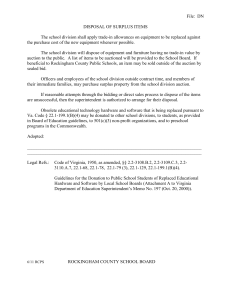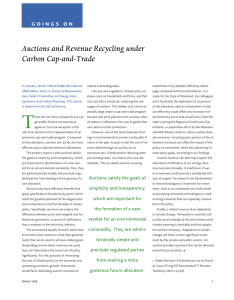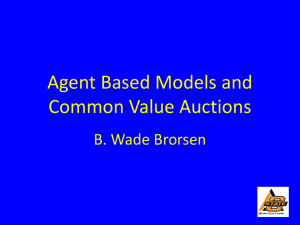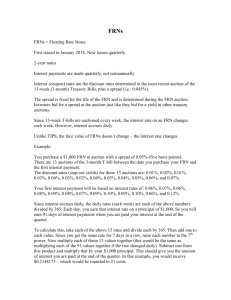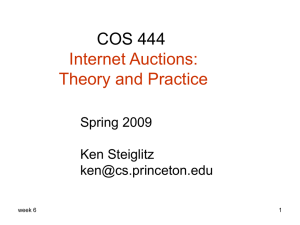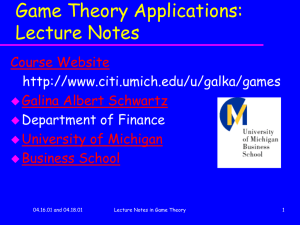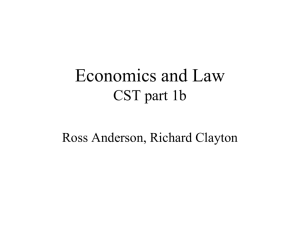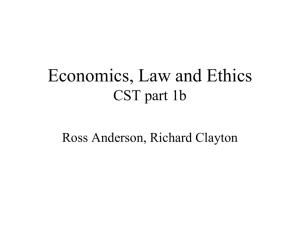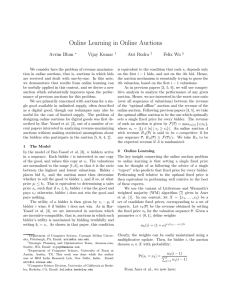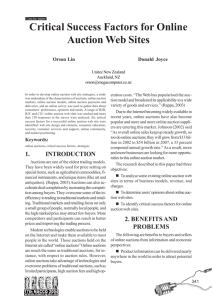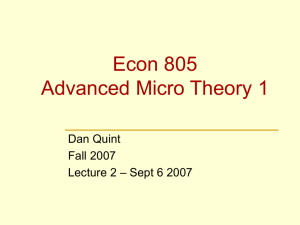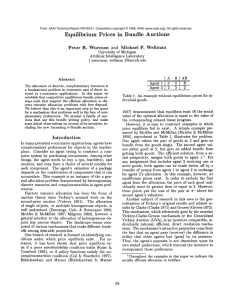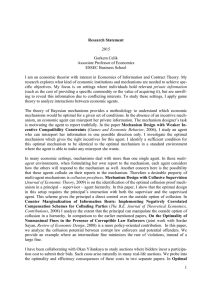Managerial Economics
advertisement
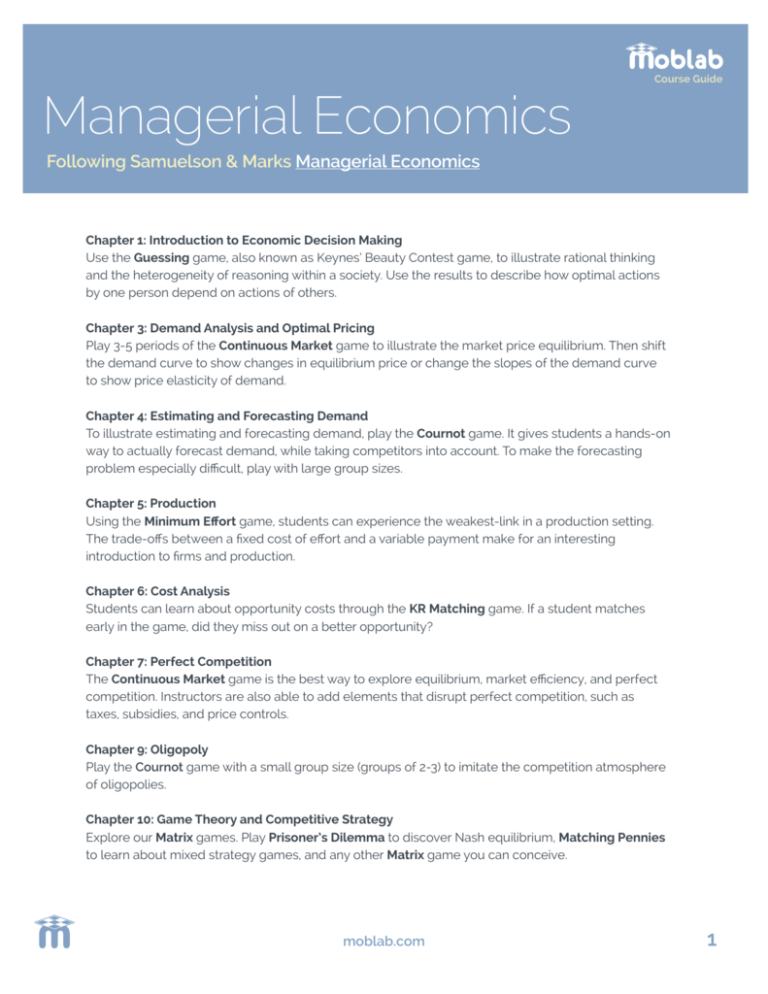
Managerial Economics Course Guide Following Samuelson & Marks Managerial Economics Chapter 1: Introduction to Economic Decision Making Use the Guessing game, also known as Keynes’ Beauty Contest game, to illustrate rational thinking and the heterogeneity of reasoning within a society. Use the results to describe how optimal actions by one person depend on actions of others. Chapter 3: Demand Analysis and Optimal Pricing Play 3-5 periods of the Continuous Market game to illustrate the market price equilibrium. Then shift the demand curve to show changes in equilibrium price or change the slopes of the demand curve to show price elasticity of demand. Chapter 4: Estimating and Forecasting Demand To illustrate estimating and forecasting demand, play the Cournot game. It gives students a hands-on way to actually forecast demand, while taking competitors into account. To make the forecasting problem especially difficult, play with large group sizes. Chapter 5: Production Using the Minimum Effort game, students can experience the weakest-link in a production setting. The trade-offs between a fixed cost of effort and a variable payment make for an interesting introduction to firms and production. Chapter 6: Cost Analysis Students can learn about opportunity costs through the KR Matching game. If a student matches early in the game, did they miss out on a better opportunity? Chapter 7: Perfect Competition The Continuous Market game is the best way to explore equilibrium, market efficiency, and perfect competition. Instructors are also able to add elements that disrupt perfect competition, such as taxes, subsidies, and price controls. Chapter 9: Oligopoly Play the Cournot game with a small group size (groups of 2-3) to imitate the competition atmosphere of oligopolies. Chapter 10: Game Theory and Competitive Strategy Explore our Matrix games. Play Prisoner’s Dilemma to discover Nash equilibrium, Matching Pennies to learn about mixed strategy games, and any other Matrix game you can conceive. moblab.com 1 Managerial Economics Course Guide Following Samuelson & Marks Managerial Economics Chapter 11: Regulation, Public Goods, and Benefit-Cost Analysis Have students learn about market failures by playing the Public Goods and Fishing (also known as Tragedy of the Commons) games. In both Public Goods and Fishing games, instructors can set up government regulations to show how small changes in market design cause big changes in behavior. Chapter 12: Decision Making under Uncertainty Draw analogies between the stock market and the Herding game so students readily see how easy it is to create information cascades. Students are forced to make decisions based on information that may or may not be credible. This game clearly shows how stock market bubbles or fashion crazes form. Chapter 13: The Value of Information The Common Value Auction game is ideal for helping students understand the value of information. What is the best strategy to winning the auction given your information? Chapter 14: Asymmetric Information and Organizational Design Asymmetric markets are everywhere - especially in the used car market! Playing the Market for Lemons game makes it clear to students how inefficient an asymmetric information market can be. Chapter 15: Bargaining and Negotiation Negotiation between two parties is easily seen through the Bargaining game or the Ultimatum game. Students can also explore building fortuitous relationships, a necessary element for negotiations, through the Trust game. Chapter 16: Auctions and Competitive Bidding While most students are familiar with an English auction, they might not know it by that name. They are probably unfamiliar with all the other variations on auctions. Students can learn about competitive bidding strategy and other forms of auctions through our extensive list of auction games: Private Value English Auction, Private Value Sealed Bid Auction, Ascending Clock Auction, and Descending Clock Auction. moblab.com 2








